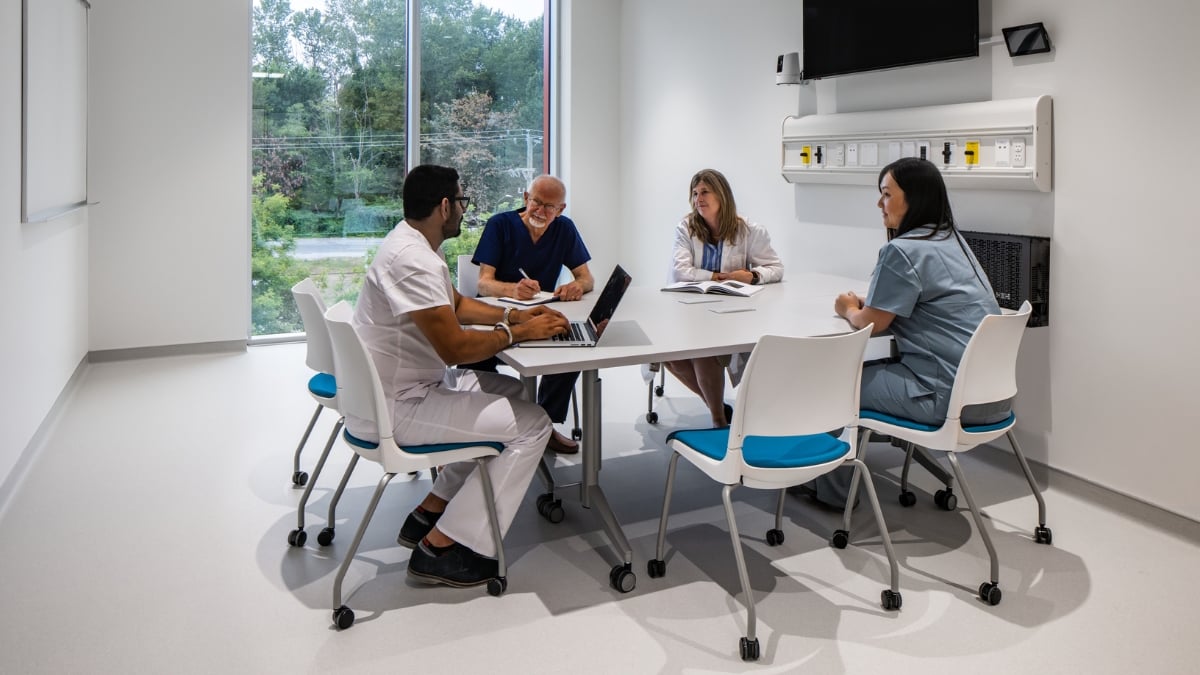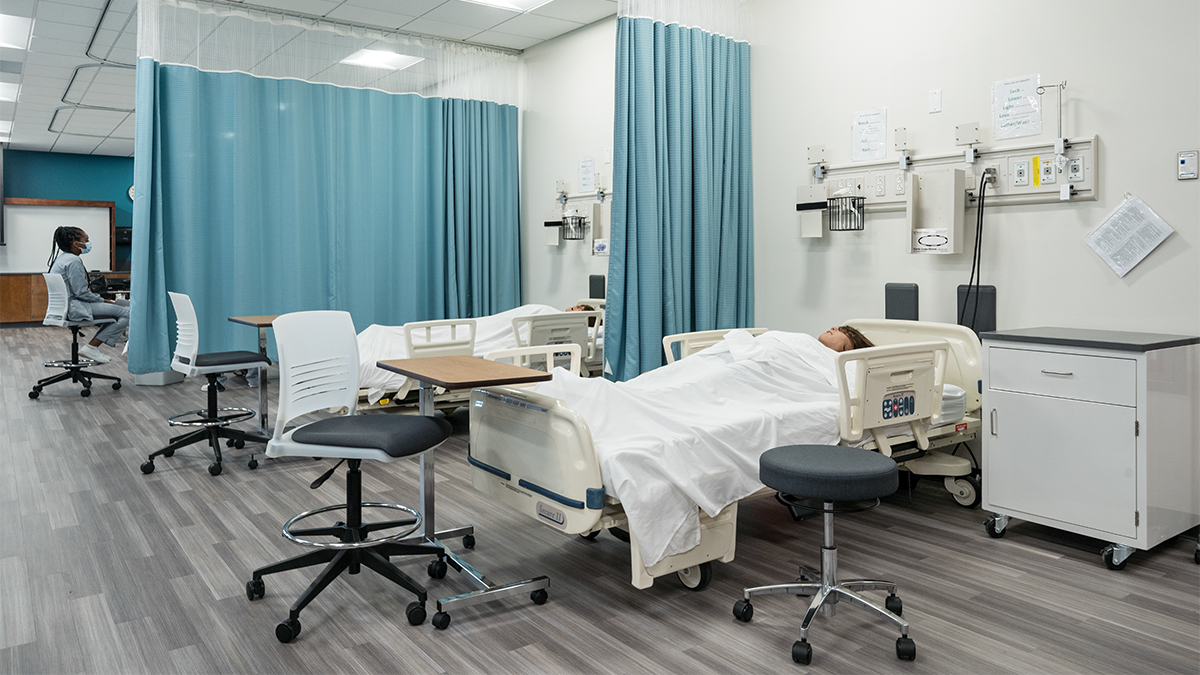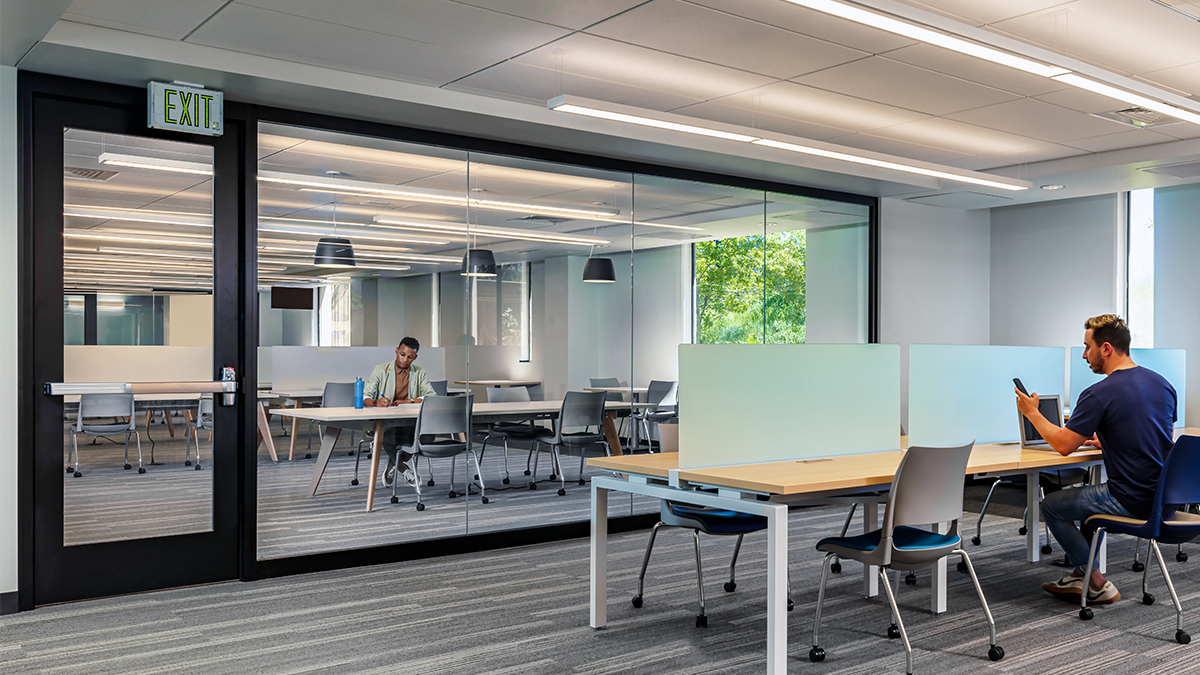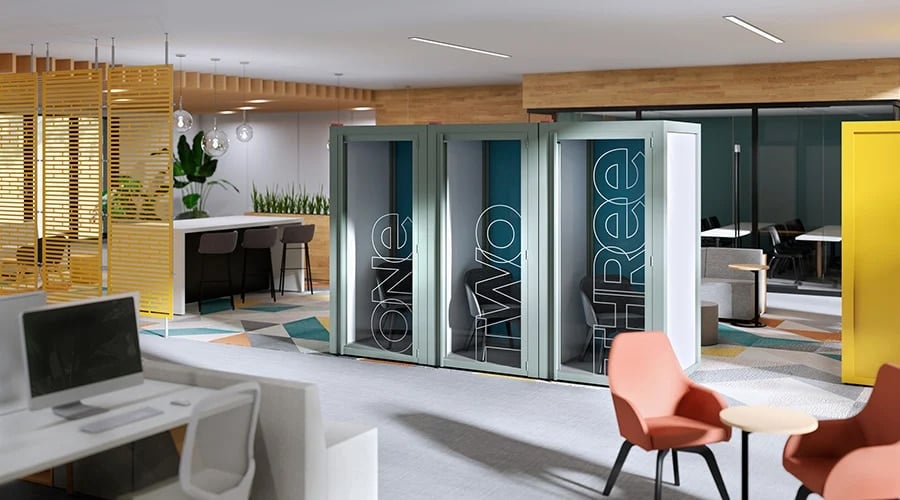- What's New
- Pricing & Purchasing
- Lead Times
- Literature & Samples
- Services & Warranties
- Careers
- Find a Rep
How Healthcare Providers Are Adapting to Telehealth

Virtual healthcare is here to stay. Here’s how patients and hospitals are responding, with insights on how intentional design can smooth the transition for patients and providers alike.
If you haven’t had a telehealth doctor’s appointment yet, you probably will soon.
Communicating with healthcare professionals via text or video call is now part of the status quo, and in many instances, it’s making it easier for people to access quality, timely care.
However, this shift also requires changes to healthcare facilities, most of which aren’t currently designed to seamlessly integrate telehealth. Designing for flexibility can help smooth the transition for patients and providers alike.
The following insights explore how healthcare administrators can design healthcare spaces for flexibility and continue to adapt to the evolution of telehealth.
Telehealth: A New Era of Virtual Healthcare
During the COVID-19 pandemic, telehealth visits increased 63-fold as stay-at-home orders made traditional visits to the doctor’s office less frequent. Patients and doctors switched to video chats, phone calls, and even text messages to deliver and receive healthcare.
Even with stay-at-home orders long gone, virtual healthcare use remains strong. Around a quarter of all adults use telehealth services.
McKinsey and Company found that right before the pandemic, virtual healthcare accounted for just one percent of all visits. Now it accounts for up to 17 percent.
Telehealth as a Force for Good
Patients are largely satisfied with virtual healthcare, and doctors say it allows them to offer more comprehensive care by seeing patients in their homes or conducting at-home health monitoring.
Many patients even prefer telehealth to in-person visits for discussing test results, refilling prescriptions, and receiving mental health counseling.
Telehealth is also associated with positive health outcomes.
One study of half a million patients in the Journal of the American Medical Association found that patients who used telehealth services had better health outcomes for 11 of 16 health metrics compared to patients who only sought in-person healthcare appointments. Metrics included screening for certain cancers, managing glucose and blood pressure, counseling for tobacco use, and receiving influenza vaccinations.
Boston Medical Center featuring Evoke architectural walls with inkjet-printed graphics
Telehealth is Evolving but Here to Stay
All evidence points to telehealth as a lasting development, rather than a trend of the moment.
In a 2022 study, almost 95% of patients said they “definitely” or “probably” will receive virtual healthcare in the future.
How providers conduct virtual healthcare today will look very different in five, 10, and 15 years, especially as technology advances and more best practices emerge.
In another study, researchers sought input from primary care physicians who shifted to remote work during the pandemic. They asked the doctors about the biggest challenges to providing virtual healthcare and what helped them throughout the transition.
Physicians cited flexibility, upgraded office spaces, and peer collaboration as three core elements that allowed them to quickly and effectively transition to providing healthcare virtually.
How to Design for Telehealth
Hospitals and healthcare facilities can put the results of this study to good use by designing mobile, multipurpose spaces that support technology and allow privacy for patient communication.
This means ensuring virtual healthcare spaces are well-lit with good visibility, fully or mostly soundproof, and equipped with proper technology.
Single-user privacy pods offer acoustic and visual privacy so healthcare providers can discuss sensitive and confidential information with their patients on the phone or through video chat but without leaving the hospital or clinic.
For group work, larger privacy pods or semi-open structures allow healthcare professionals to collaborate with their colleagues with varying levels of privacy.
KI showrooms featuring (L) WiggleRoom Pod and (R) WiggleRoom Super Structure
As telehealth expands, healthcare training will also evolve.
Many facilities are hiring more administrative staff to help with the IT and technological transitions. Staff with varying levels of experience with technology or telehealth software may benefit from a tutorial from their employer.
The most productive training spaces are designed for flexibility, collaboration, and integrated technology, including ample power outlets and adequate table space for laptops. Designs that incorporate these elements will minimize interruptions and maximize the ability of healthcare providers to focus on the health of their patients.
(L) St. Francis space featuring Likha media peninsula and Katera chairs; (R) Roseville Pediatrics space featuring WireWorks system and Impress Ultra task chairs
Focus on the Future of Healthcare
The healthcare industry has undergone significant transformation with the integration of technology and the rise of telehealth. The convenience, efficiency, and accessibility of virtual healthcare have made it a preferred choice for many, and data shows it's here to stay.
And yet, the transition to virtual healthcare presents challenges that demand change to the design of healthcare environments, including innovative solutions such as privacy pods and technology-equipped rooms. Equally important is the effective training of staff to ensure seamless service delivery using telehealth software.
As we continue to navigate this new digital era, we encourage healthcare administrators to fully embrace the incredible potential of virtual healthcare and harness the power of telehealth to deliver exceptional patient care.
And with that, our healthcare design and space planning experts can help! Reach out to me at jonathan.webb@ki.com, and I'll put you in touch with a KI expert nearest you.
Related Content
 Blog
Blog
Today's students are tomorrow's healthcare workers. Discover how practical, technology-enabled simulation spaces are preparing a new generation of doctors and nurses for the workforce.
 Blog
Blog
From open offices to quiet study spaces, discover how the design of architectural walls can help you improve acoustics for collaboration, focus, and privacy in modern work and learning environments.
 Blog
Blog
WiggleRoom can offer employers and schools alike an innovative way to enable focused work safely in open, public space.
Subscribe
Stay up to date with the latest trends and more.













